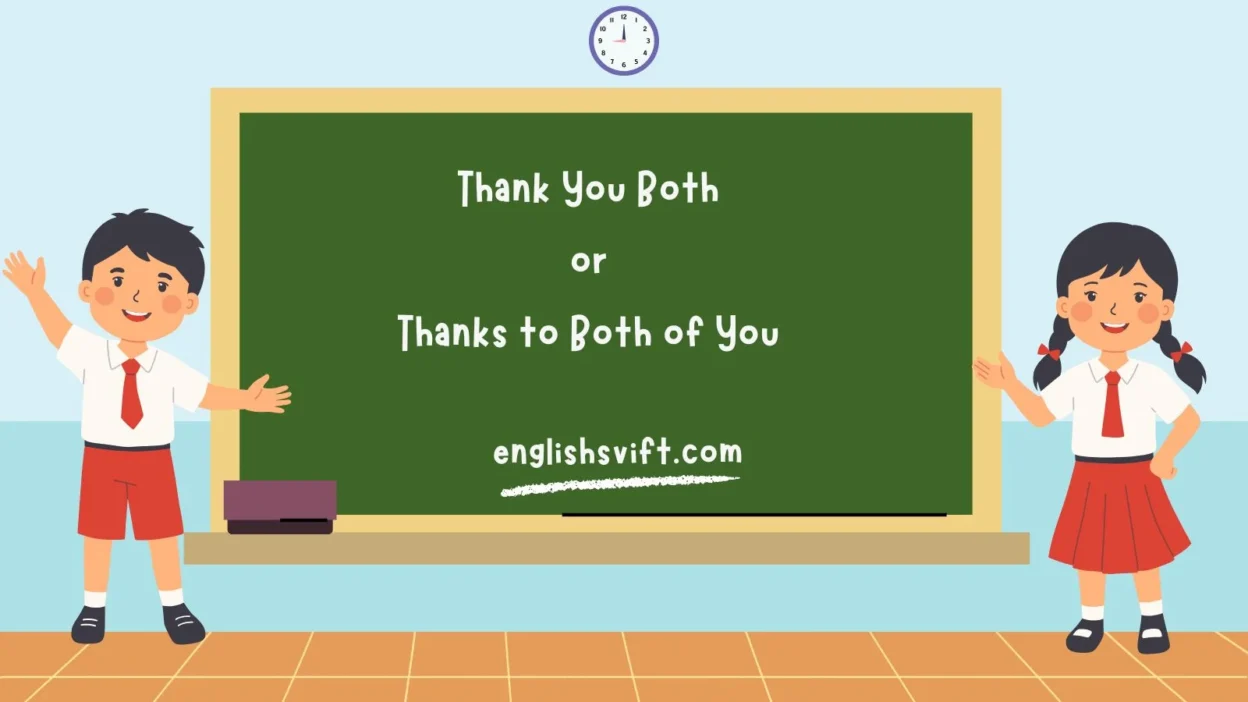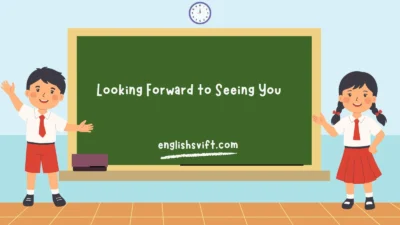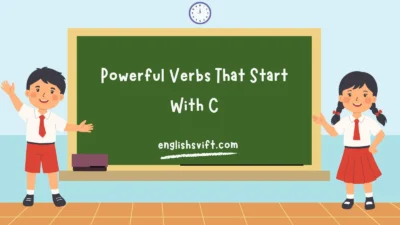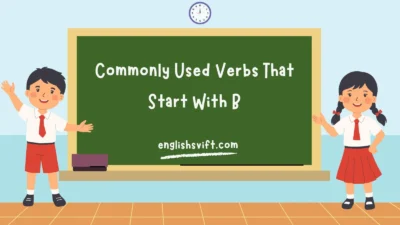Gratitude is timeless, but how we express it evolves. In 2025, the debate around “Thank You Both” vs. “Thanks to Both of You” is more relevant than ever.
With nuanced language, cultural shifts, and a demand for clarity, this guide helps you navigate these expressions for any situation—personal or professional.
The Core Difference Between “Thank You Both” and “Thanks to Both of You”
Both expressions aim to convey gratitude, but there’s a difference in structure and tone:
| Phrase | Structure | Tone | Use Case |
| Thank You Both | Direct, concise | Formal or neutral | Emails, public speech |
| Thanks to Both of You | Slightly indirect | Conversational, emotional | Personal notes, storytelling |
“Thank You Both” is a simple sentence where “both” is a plural pronoun referring to two individuals.- “Thanks to Both of You” carries a narrative flavor. It’s often used when explaining how someone’s help led to a result.
Which Phrase Is More Popular in 2025?
Search trends from 2024 to 2025 indicate a surge in searches for “Thanks to Both of You” in casual blogposts and conversational writing, while “Thank You Both” remains dominant in professional emails and presentations.
“I just wanted to say, thank you both for your support during the engagement party.”
“Thanks to both of you, we achieved our product launch goals!”
Formal vs Informal Contexts for Each Expression
| Context | Preferred Phrase |
| Business emails | Thank You Both |
| Blogposts or casual messages | Thanks to Both of You |
| Speeches and presentations | Thank You Both |
| Storytelling or acknowledgment | Thanks to Both of You |
Use “thank you both” when addressing colleagues or clients.- Use “thanks to both of you” when showing appreciation with added emotion or context.
Grammar Breakdown: Pronoun, Phrase, and Plural Noun Explained
Let’s break it down grammatically:
- Thank: Verb (expression of gratitude)
- You: Pronoun (second person)
- Both: Plural determiner or predeterminer, emphasizing two people
- Thanks: Noun form of “thank”
In “Thanks to Both of You,” “thanks” is a noun, and “to both of you” is a prepositional phrase.
When “Both” Really Means Two People
The word “both” specifically refers to two people. For more than two, you’d say:
- Thank you all
- Thanks to everyone here
- Thanks to each and every one of you
This clarity is vital in group settings like teamwork, volunteering, or community service.
The Role of Tone and Context in Thank-You Phrases
Your tone determines whether a thank-you feels heartfelt or routine. Consider:
- Neutral tone: “Thank you both for attending.”
- Warm tone: “Thanks to both of you—it truly means a lot.”
Use emphasis, body language, and intonation to match your intention.
Saying “Thank You” in Casual Conversations
In informal contexts:
- Cheers
- Much obliged
- Thanks a bunch
- Appreciate it
These expressions appear in daily conversations, especially across regions like the UK, Australia, and South Africa.
The Emotional Impact of “Thank You Both” in Everyday Language
When said with sincerity, “thank you both” can:
- Boost motivation
- Create a cycle of kindness
- Improve well-being and emotional support
Especially when paired with positive attitudes, gestures like a pat on the back or warm gaze increase its emotional value.
Thanking People in Formal Settings: Presentations and Public Speech
In a presentation or speech, clarity is key:
“Thank you both—Shaun Connell and Leonardo Di Vincenzo—for your contributions to this project.”
Here, formality blends with precision, often enhanced by structured environments like award ceremonies or business meetings.
“Thanks to Both of You” as an Idiom: Sarcasm and Sincerity
Interestingly, this phrase can carry sarcasm:
- “Thanks to both of you, I missed my train.”
It’s all about tone, intent, and context. Always consider your audience before using it this way.
Synonyms, Alternatives, and Variations in Different Cultures
Here’s a helpful table:
| Synonym | Context | Tone |
| Appreciate it | General use | Neutral |
| Much obliged | Formal | Polite |
| Endless gratitude | Emotional | Sincere |
| Shout out | Social media | Casual |
| Ta | British | Informal |
Different cultures emphasize different expressions—in Asia, politeness dominates, while in Africa, expressions are often more communal.
Expressions for More Than Two: Expanding Beyond “Both”
If you’re thanking more than two individuals, try:
- Thanks everybody
- Thanks to all of you
- Thanks to my parents
- Thank you to my family
Example: “Thanks to each and every one of you for your commitment and energy.”
Examples in Sentences: From Dinner to Brainstorming Sessions
- “Thank you both for preparing the dinner.”
- “Thanks to both of you, our brainstorming session led to brilliant ideas.”
Scenarios include:
- Dinner with friends
- 21st birthday surprises
- Engagement party speeches
The Power of Body Language and Non-Verbal Cues
Verbal expression is only half the message. Consider:
| Gesture | Meaning |
| Smile | Warmth, friendliness |
| Eye contact | Sincerity |
| Handshake | Professional respect |
| Hug | Personal connection |
Body language enhances thank-you phrases, especially in emotional situations.
Real-Life Usage: Birthdays, Weddings, and Workplace Settings
“Thank you both for making my 21st birthday unforgettable.”
“Thanks to both of you, the wedding footage came out perfect.”
These expressions are perfect for:
- Special occasions
- Workplace accomplishments
- Daily moments of help
Common Misuses and Subtle Distinctions in Meaning
Avoid these pitfalls:
- Using “thank you both” for more than two people.
- Saying “thanks to both of you” in a sarcastic tone unintentionally.
Also, don’t forget that “thank you both” and “thanks to both of you” can’t be separated grammatically. Keep them as complete expressions.
“Thank You” in the Digital Age: Emails, Notes, and Texts
Tips for digital expression:
- Emails: “Thank you both for your quick response.”
- Texts: “Thanks to both of you 🙏”
- Thank-you notes: Use full phrases for maximum impact.
A Global View: Expressions of Gratitude in Asia and Africa
In Asia, gratitude often appears in group-oriented language like:
“Thank you, all of you.”
In Africa, verbal appreciation is often combined with gifts, gestures, and community language—demonstrating deep cultural significance.
Contributions, Collaboration, and Collective Effort
Gratitude often follows projects involving:
- Teamwork
- Creative ideas
- Individual contributions
- Execution and coordination
Saying “thank you both” validates not just action—but effort, timing, and team setting.
Thanking in a Professional Environment: Support, Patience, and Expertise
Common phrases in professional settings:
- “Thank you both for your dedication and attention to detail.”
- “Thanks to both of you, the client was impressed.”
Professionalism thrives on recognition, trustworthiness, and clear communication.
Emotional Intelligence and the Cycle of Kindness
Gratitude fuels a cycle of kindness. When expressed properly, it:
- Builds strong interpersonal skills
- Increases satisfaction levels
- Encourages further commitment
Positive Attitudes, Encouragement, and Recognition
Use thank-you phrases to recognize:
- Encouragement
- Staying late
- Challenging tasks
- Reliability
Even a quick “thank you both” can lift someone’s day.
Polite Expressions: Cheers, Much Obliged, and More
Here’s a comparison:
| Phrase | Context | Region |
| Cheers | Informal | UK, Australia |
| Much obliged | Formal | US, older generations |
| Thanks a bunch | Friendly | General |
| Appreciate it | Neutral | Global |
LSI-Rich Alternatives for “Thank You Both”
- “Thanks for everything you do”
- “We’re extremely grateful”
- “Your help means a great deal”
- “Thank you from the bottom of my heart”
These variations enhance emotional intelligence and expression depth.
Writing Tips: How to Thank Someone Effectively
- Be specific
- Use appropriate tone
- Match context (casual vs formal)
- Add personal touch: “amazing friends,” “inspiring ideas,” etc.
- Mention insights, support, or positive difference
Conclusion: Using the Right Phrase with Intention and Grace
Language is powerful—but only when used with care. Whether you’re crafting a thank-you note, giving a speech, or just texting a colleague, choose the expression that fits your tone, your audience, and the number of people involved.
- “Thank You Both” = crisp, formal, balanced
- “Thanks to Both of You” = warm, story-driven, heartfelt
Let your words echo sincerity.
FAQs
What is the difference between “Thank You Both” and “Thanks to Both of You”?
“Thank You Both” is direct and formal. “Thanks to Both of You” is slightly longer, more emotional, and suited to informal settings.
Can I use “Thank You Both” for more than two people?
No. Use “Thank you all” or “Thanks everyone” for larger groups.
Is it correct to say “Thanks Both of You”?
No. That’s grammatically incorrect. Say “Thanks to both of you.”
What’s a casual alternative to “Thank You Both”?
Try “Cheers,” “Thanks a bunch,” or “Appreciate it.”
Are there cultural differences in thank-you phrases?
Yes. For instance, “Much obliged” is more common in older American English, while “Ta” is a British casual expression.



